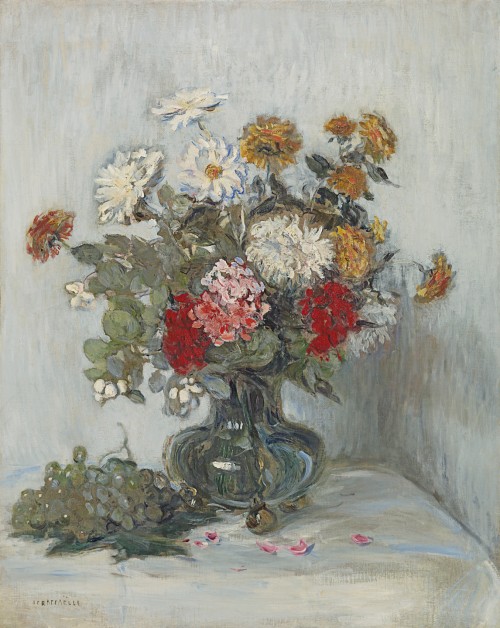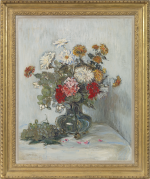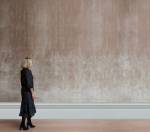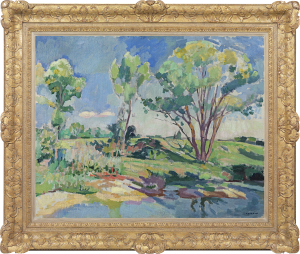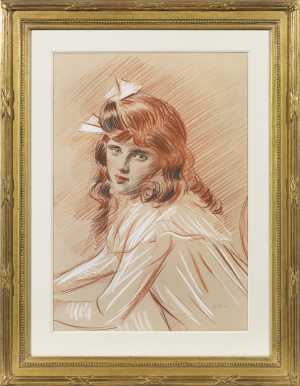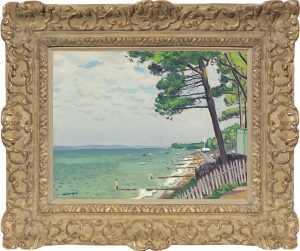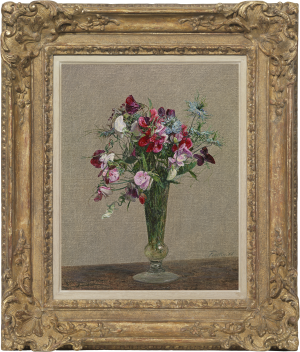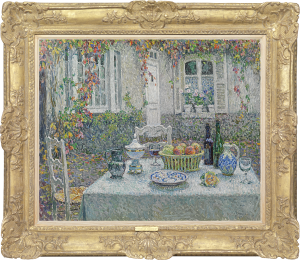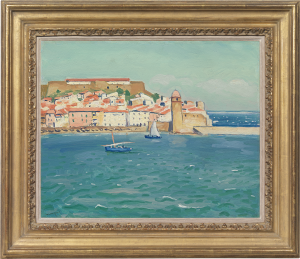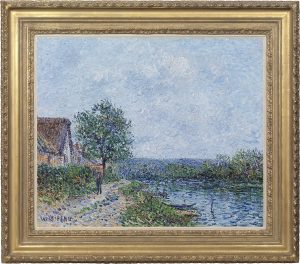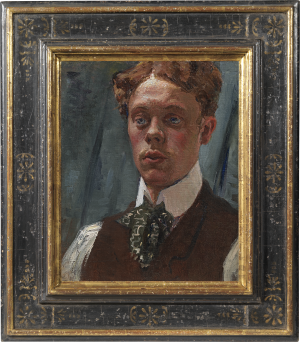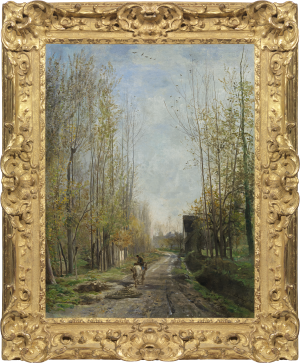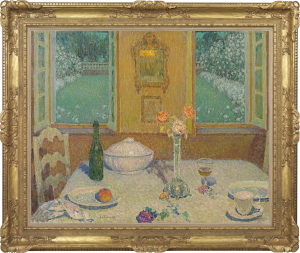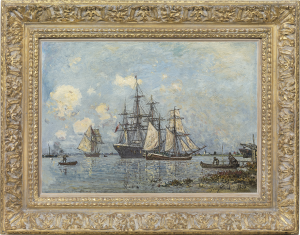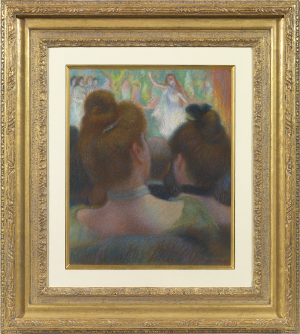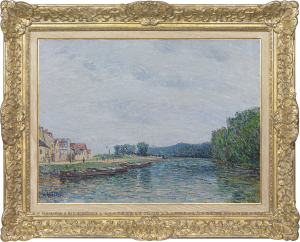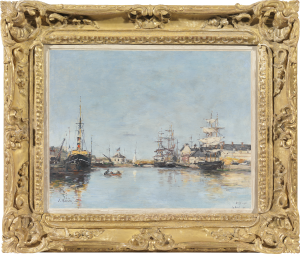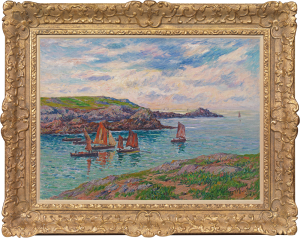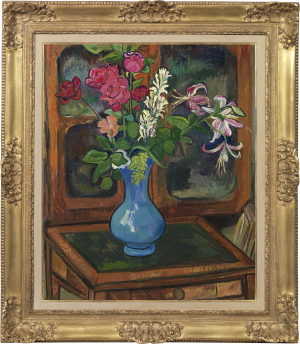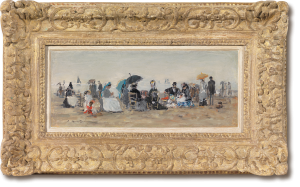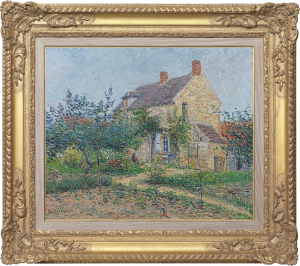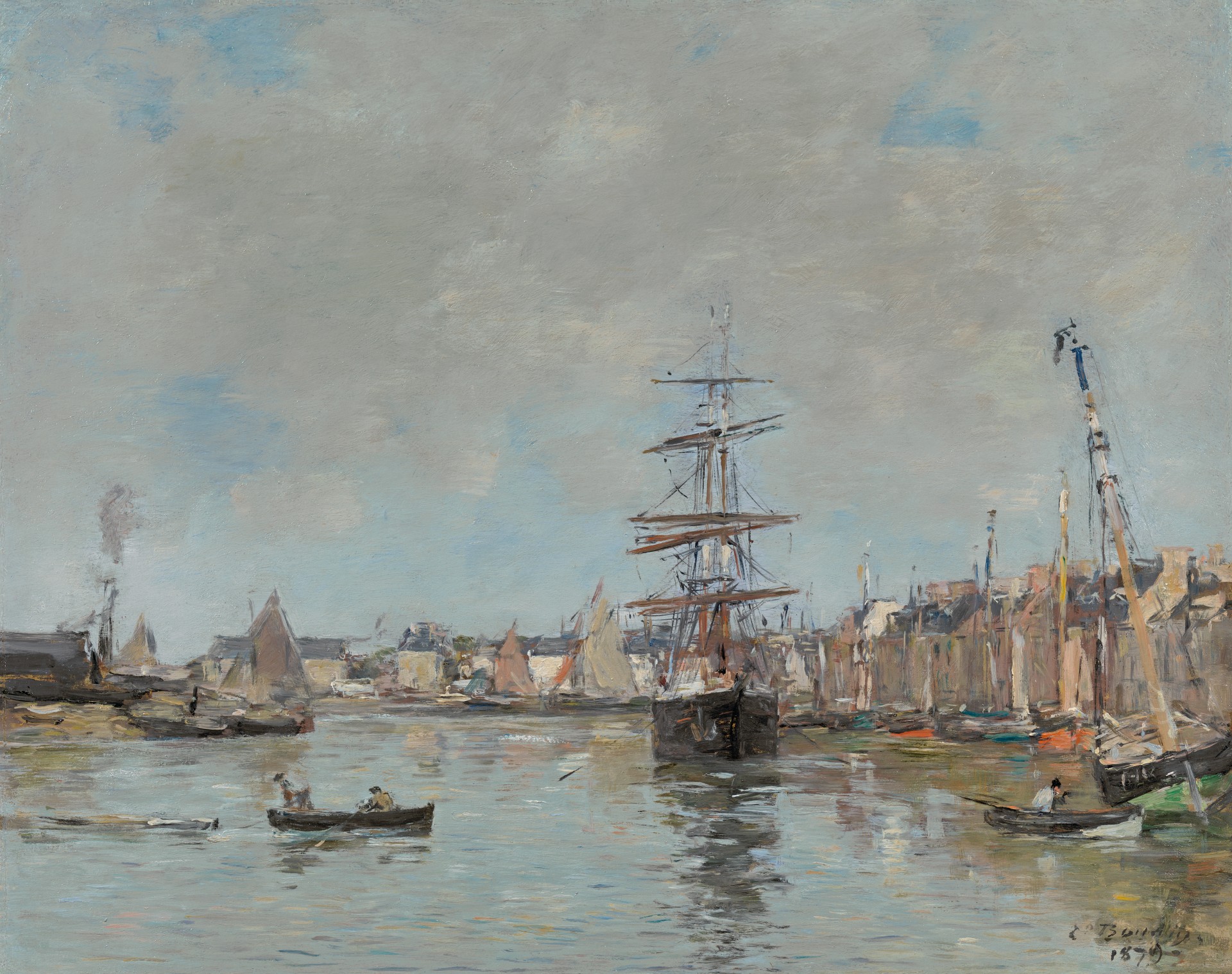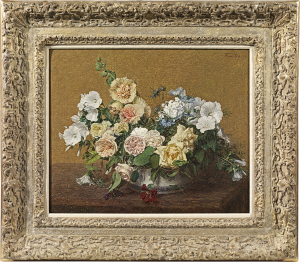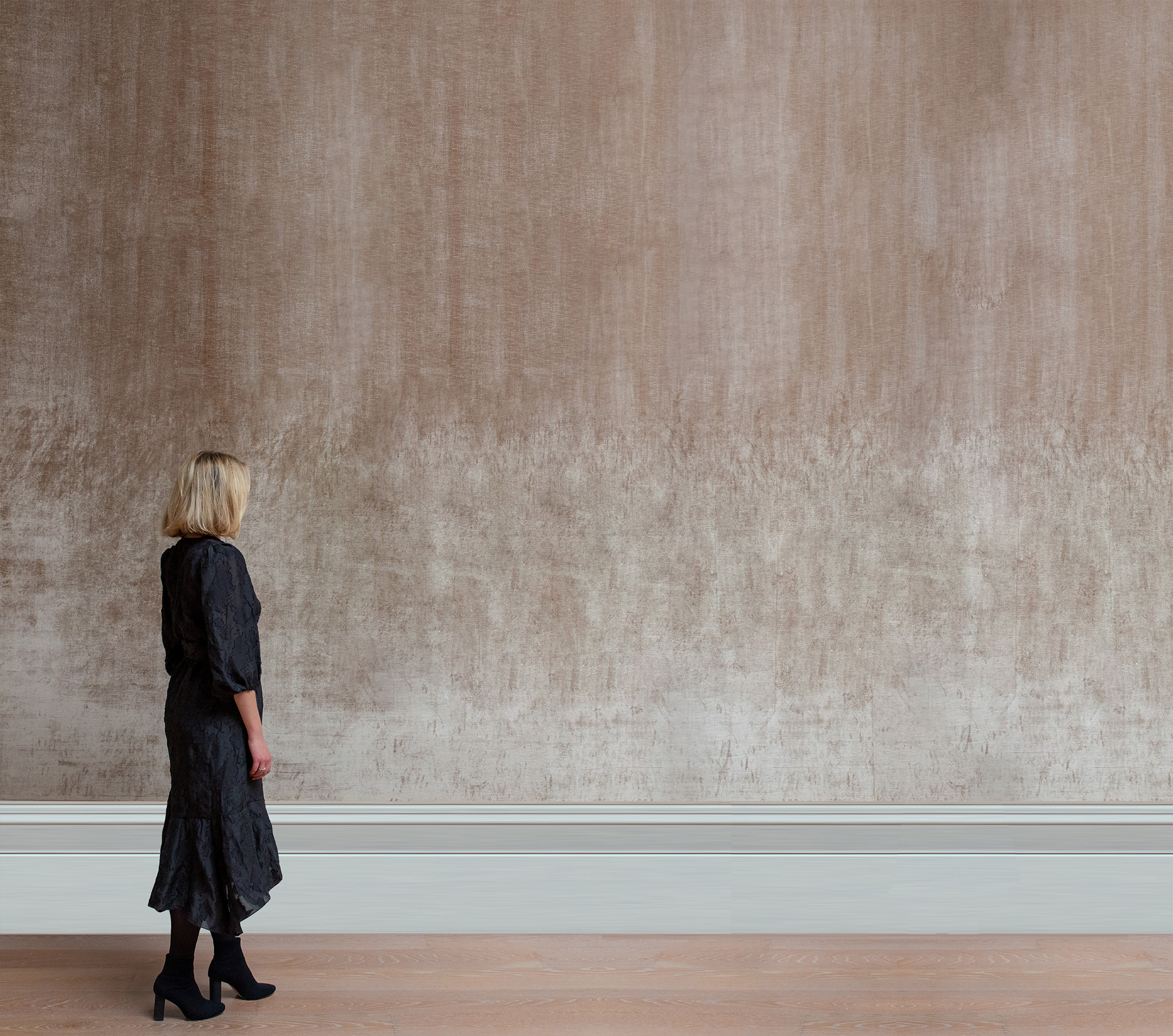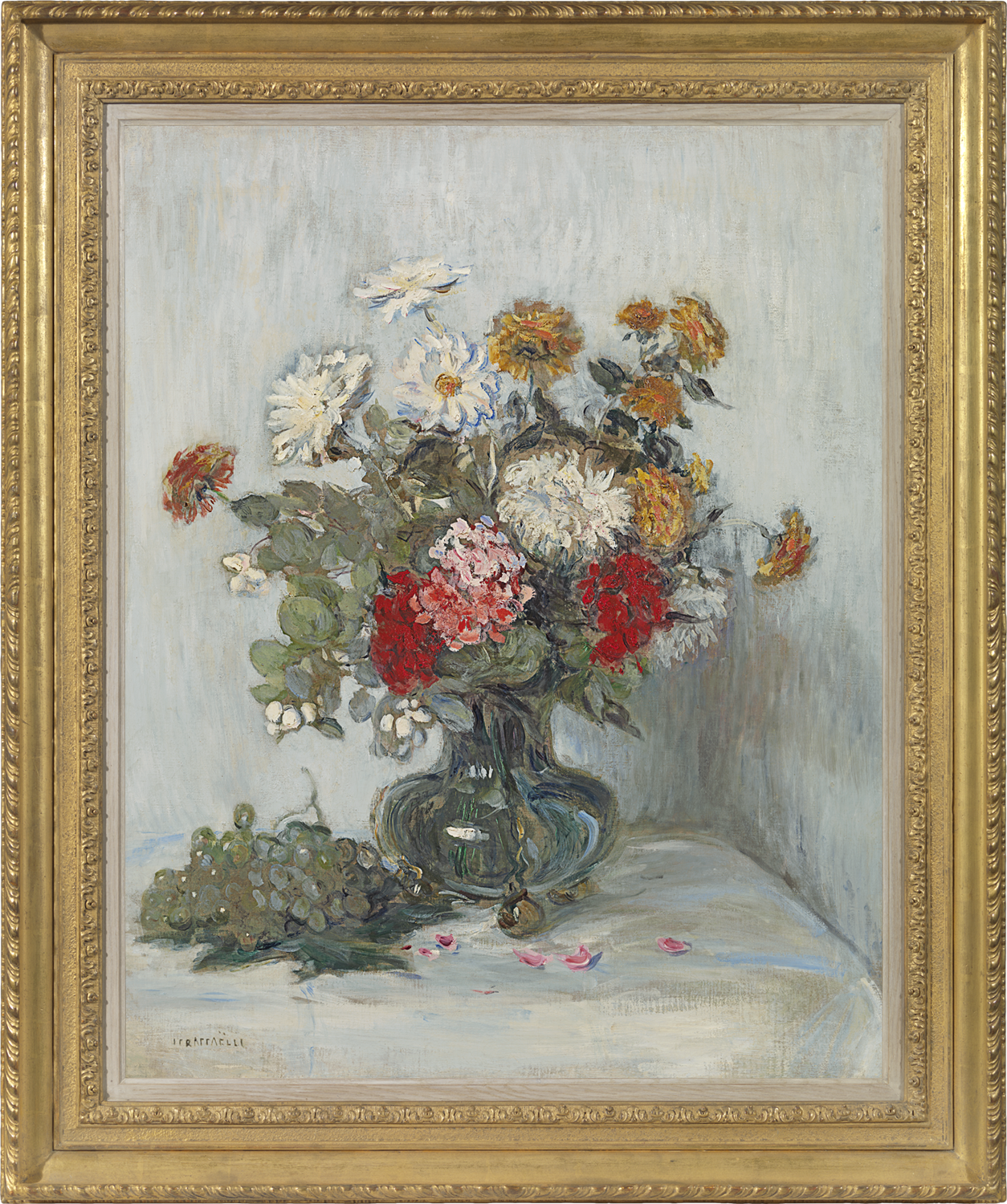Jean-Francois Raffaëlli
Fleurs et raisins
Oil on canvas: 32 x 25.5 (in) / 81.3 x 64.8 (cm)
Signed lower right: JF RAFFAËLLI
This artwork is for sale.
Please contact us on: +44 (0)20 7493 3939.
Email us
JEAN FRANCOIS RAFFAELLI
Paris 1850 - Paris - 1924
Ref: BS 195
Fleurs et raisins
Signed lower right: JF RAFFAËLLI
Oil on canvas: 32 x 25½ in / 81.3 x 64.8 cm
Frame Size: 39½ x 33¼ in / 100.3 x 84.5 cm
Painted circa 1896-99
In a French Louis XIV style pastel frame
Provenance:
Monsieur Vincent Imberti, Bordeaux, by 1920;
Collection particulière de Monsieur Vincent Imberti, Goupil & Cie, Bordeaux, 1920s, lot 23 (as Fleurs; label on the reverse)
Kunsthandel Huinck & Scherjon, Amsterdam, by 1936
Private collection, Europe
Exhibited:
Paris, before 1920 (label on the reverse)
Literature:
Arsène Alexandre, Jean-François Raffaëlli, 1909, p.172
HP Bremmer, Beeldende Kunst, Amsterdam, July 1937, vol. 24, no.20 (as Zinias in glazen vaas)
The authenticity of the work has been confirmed by Galerie Brame & Lorenceau and will be included in their forthcoming computerized Catalogue critique of the artist
In the 1880s Jean-François Raffaelli lived in Asnières and was celebrated for his Naturalist, psychologically acute paintings of the marginalized figures of society, such as rag-pickers and absinthe drinkers. In 1892 he moved further into the centre of Paris, taking a studio at 202 Rue de Courcelles in the 17th arrondissement. His interests shifted to the ‘modern life’ of the bourgeoisie on the Grands Boulevards, painted with a lighter palette and dazzling, allusive brushwork. He also painted portraits and still lifes.
Galerie Brame & Lorenceau date this painting of Fleurs et raisins to circa 1896-99. It shows Raffaëlli’s instinctive, painterly approach, ‘drawing’ with colour to suggest the shape and structure of the flowers and the myriad reflections of stems and water in the glass vase. Raffaëlli makes superb use of a range of neutral tones, notably the shimmering whites, greys and cream of the background and tablecloth, and the grey-greens of the foliage and grapes, to suggest radiance and space. Against this radiance the scarlet geraniums and yellow and red zinnias glow all the more brightly. A few red petals have fallen among the blue shadows of the tablecloth, bridging the foreground into focus.
This painting was owned by the Bordeaux print dealer Vincent Imberti, who bought the stock of the influential Parisian art publisher and picture dealer Maison Goupil in 1920. The Raffaëlli was sold from Imberti’s private collection in the 1920s. The remaining Goupil stock and archive are today in the Goupil Museum, Bordeaux.
JEAN-FRANÇOIS RAFFAËLLI
1850 - Paris - 1924
Jean-François Raffaëlli was born in Paris into a bourgeois family of Italian descent. He enjoyed a privileged childhood until the age of fourteen, when the failure of his father’s textile business forced him to seek employment. He held a series of jobs before being placed, unwillingly, in a house of commerce as a book-keeper at the age of sixteen. While working there, he began to visit the Louvre and to spend his Sundays in the Musée du Luxembourg. His initial artistic interest was in drawing, and as he developed this passion, he gave up his job and supported himself by singing in theatres and churches.
Although he had received no formal training, one of Raffaëlli’s landscapes was accepted by the Salon Jury in 1870, and the following year he enrolled at the Ecole des Beaux-Arts, where he studied in the studio of Gérôme for three months. For the first period of his artistic development, Raffaëlli turned to Corot, Roybet and Fortuny, painting mainly landscapes and historical costume pieces. Suddenly and without apparent warning he produced a powerful portrait of a Breton peasant family in 1876, La famille de Jean le Boîteux (Mairie de la Quesnoy, Dépot du Musée d’Orsay). This was exhibited at the 1877 Salon and heralded a new phase in the artist’s career.
Raffaëlli was one of the young artists who gathered around Degas at the Café de la Nouvelle-Athènes and through the older painter's influence he was invited to exhibit with the Impressionists in 1880 and 1881. During the late 1870s and the 1880s, he painted many aspects of the rapidly expanding suburbs of Paris, frequently portraying the types of people, such as rag-pickers and garlic-sellers, who were being made redundant by the onset of urbanisation. In the 1880s, Raffaëlli ws living in Asnières on the Seine to the north-west of the city, a popular bourgeois leisure spot, but just across the river from Clichy and Levallois, haunt of the urban poor. In 1892 he moved back into the centre of Paris and began to concentrate largely on views of the capital, Parisian monuments, boulevards, and later, views of the countryside and seaports.
An independent exhibition of Raffaëlli’s work was held in 1884 and five years later he was awarded the Légion d’Honneur. He visited New York in 1895 and 1897 and died in Paris in 1924.
The work of Jean-François Raffaëlli is represented in the Louvre, Paris; the Musée d’Orsay, Paris; the Metropolitan Museum of Art, New York; the Museum of Fine Arts, Boston; the Art Institute of Chicago; the Philadelphia Museum of Art and the Museo Nacional de Bellas Artes, Buenos Aires.

